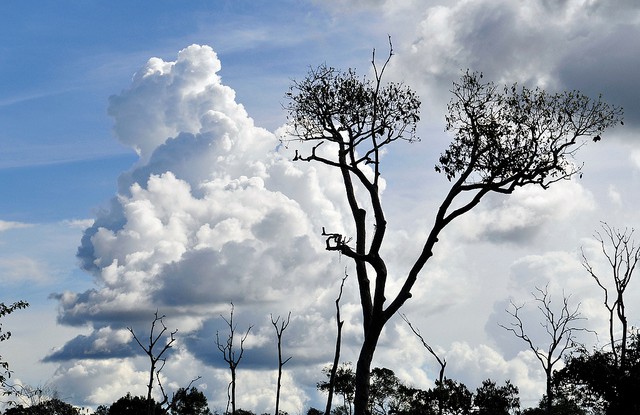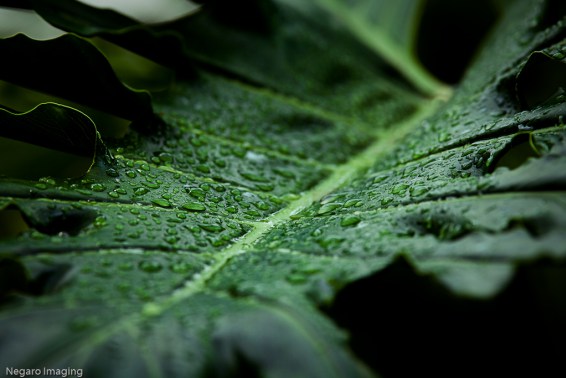
One of the world’s top climate scientists warns that the tropical forests of the future could look like an ‘impoverished kind of savannah’ under climate change.
Carlos Nobre, Brazil’s National Secretary for Research and Development Policies and a member of the UN Secretary General’s High-level Panel on Global Sustainability, said that despite tremendous progress in curbing deforestation in the Brazilian Amazon, modeling gives a glimpse of the potential negative impacts of climate change.
“We are in a good moment in terms of transforming land-use change in the tropics … but in the present there are areas in the Amazon in which a repeated cycle of deforestation, regrowth and fire has led to a landscape that is highly degraded,” he told Forests News, the blog of the Center for International Forestry Research (CIFOR).
“It’s an impoverished kind of savannah. And I think that’s what the forests of the future will look like if climate change is not checked.”
Nobre is one of six world-renowned scientists who will speak at the Colloquium on Forests and Climate in New York on September 24. A co-author of the IPCC Assessment Report, Nobre said he will use his talk to highlight the important role of science in addressing climate change.
“Science is playing a very important role in fighting illegal deforestation, and also in finding sustainable solutions for the Amazon,” he said.
An edited transcript of the interview follows.
Q: What is the ‘big idea’ you’ll be discussing at the event?
A: I want to discuss the risks to the tropical forests of the planet that climate change poses. And I’ll also touch upon other drivers of land-use change, and the impact of fire on forests.
I will focus most of my attention on the Amazon because that’s where I’ve done my research – and the Amazon is emblematic of what’s going on in all tropical forests.
I’ll talk about the environmental services the forest is performing – storing carbon, providing water, climate stabilization, ecological services, pollination, and the maintenance of biodiversity.
And then I’ll show what’s going on in terms of climate change, the impact, and the future risks.
Brazil has shown tremendous progress in curbing deforestation; I want to highlight that – it’s not only bad news. The tropical forests of the planet are contributing less and less to the global carbon balance; at the same time that fossil fuel emissions continue to go up, emissions from tropical land-use change are declining. This is mostly due to reductions in deforestation in tropical Latin America, equatorial Africa and Southeast Asia. So we are in a good moment in terms of transforming land-use change in the tropics.
Then I will show some projections of what will happen if we do not stop climate change – how the Amazon forests might look like in the future.
We can use modeling to show us a glimpse of the future, but in the present there are areas in the Amazon in which a repeated cycle of deforestation, regrowth and fire has led to a landscape that is highly degraded. It’s an impoverished kind of savannah. I think that’s what the forests of the future will look like if climate change is not checked.
Q: What is going on in the Amazon right now in terms of climate?
A: We have seen some phenomenal things in the Amazon in the last few years, record-breaking droughts and floods one after the other, to a degree that has never been seen before for at least 113 years since the water level of the Negro River in Manaus started to be measured in 1902. As scientists we are asking, “Is this coming for good, is this permanent, is this climate change?”
Science can provide climate and environmental information that can help to promote sustainable livelihoods
And in the latest Intergovernmental Panel on Climate Change (IPCC) assessment report for which I was a co-author, you will see that we scientists who are assessing the body of knowledge are tentatively saying that what we’ve seen in the Amazon from 2005 to the present is likely to be already a precursor of climate change.
In 2005 and 2010 there were record-breaking droughts, and in 2009, 2012, and 2014 there were record-breaking floods. Five extremes in 10 years – this is very unlikely to be due to natural variability, natural occurrence of extremes.
So this is very profound. If the IPCC is right that what we are seeing in the Amazon now is something that will become more prevailing in the future and this is due to climate change, it means it will not go away. It’s not some weird, rare event.
Of course the IPCC simply synthesizes the current knowledge based on many scientific studies, so this is something to pay attention to – is what we are seeing in the Amazon the beginnings of a more permanent climate shift due to global warming?
Q: What role can science play in curbing deforestation?
A: Science can provide climate and environmental information that can help to promote sustainable livelihoods.
Satellite-based monitoring systems have been instrumental in curbing illegal deforestation – for example the role that INPE has had in Brazil in identifying in real time where deforestation is occurring in the Amazon which allows the government to enforce the laws on the ground.
So I want to show how science is playing a very important role in fighting illegal deforestation, and also in finding sustainable solutions for the Amazon. I want to put that in a broader context of science with its tools – monitoring systems, satellites, high-tech solutions – and then providing the information necessary for a new sustainable way forward for tropical forests.
Q: Why are events like this Colloquium important?
A: First of all this particular setting, New York City, one day after the UN Climate Summit – this is a good moment to raise the profile of these questions. And also with the UN right at the center of discussions on the Sustainable Development Goals, all the attention of the world will be on New York City that week.
And of course this Colloquium is specially situated in the crossroads between sustainable development and climate change, something we are still debating and arguing about. I think that this is a very good moment to bring together top experts to discuss the many facets of this issue – physical aspects like the ones I’m going to cover, economic aspects, anthropological aspects – and find a sustainable trajectory for the tropical forests of the planet.
For more information about the Colloquium on Forests and Climate, click here.
We want you to share Forests News content, which is licensed under Creative Commons Attribution-NonCommercial-ShareAlike 4.0 International (CC BY-NC-SA 4.0). This means you are free to redistribute our material for non-commercial purposes. All we ask is that you give Forests News appropriate credit and link to the original Forests News content, indicate if changes were made, and distribute your contributions under the same Creative Commons license. You must notify Forests News if you repost, reprint or reuse our materials by contacting forestsnews@cifor-icraf.org.

